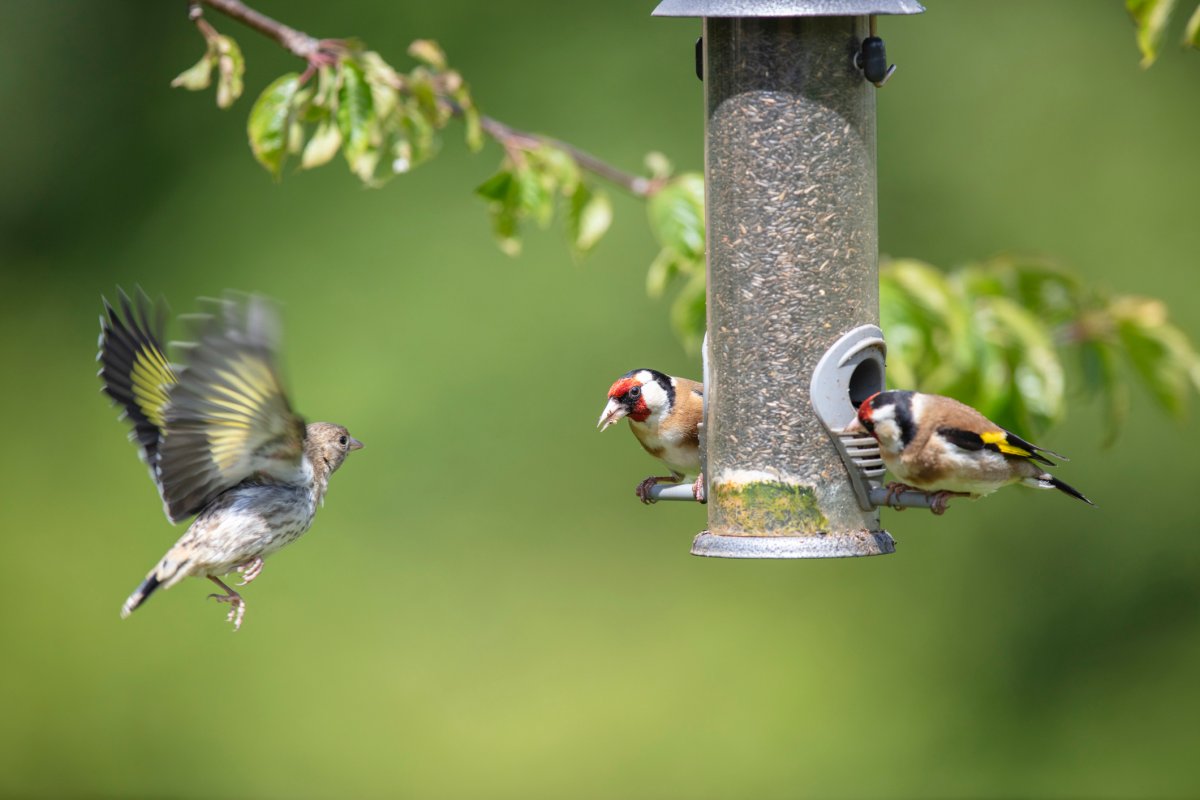

We may earn revenue from the products available on this page and participate in affiliate programs. Learn More ›
Songbirds usually herald in spring with their colors and, of course, their songs. However, this year fewer songbirds are welcoming the blossoms of the season. An outbreak of salmonellosis has struck these little feathered friends, particularly those that live in the West and Pacific Northwest. Wildlife officials explain that outbreaks of salmonellosis aren’t uncommon during the winter as more songbirds turn to bird feeders as a source of food. However, the sheer number of birds falling ill this year exceeds the norm.
The close contact at bird feeders accelerates the spread of illness from bird to bird. Birds can’t exactly socially distance, so experts recommend that people temporarily take down their backyard bird feeders to slow the spread of the disease. However, bird enthusiasts can still support the local bird population by opting for bird-friendly plants in their yards instead of a bird feeder. Here are a few tips and plants that provide food and shelter for birds.
Related: Pro Tips: 5 Ways to Bring Songbirds to Your Backyard
Bird-Friendly Plants
The Audubon Society has a native plant database to help people determine the native plants that appeal to local birds. It requires putting in a ZIP code and email address. Once the information is entered, a list of bird-friendly plants pops up.
Another option is to head to the local nursery and pick a few plants. Be sure to check out the USDA’s Plant Hardiness Zone Map to give you an idea of the types of plants that thrive in the local area. Other sources for local bid-friendly plants are native plant societies, master gardeners, and extension offices.
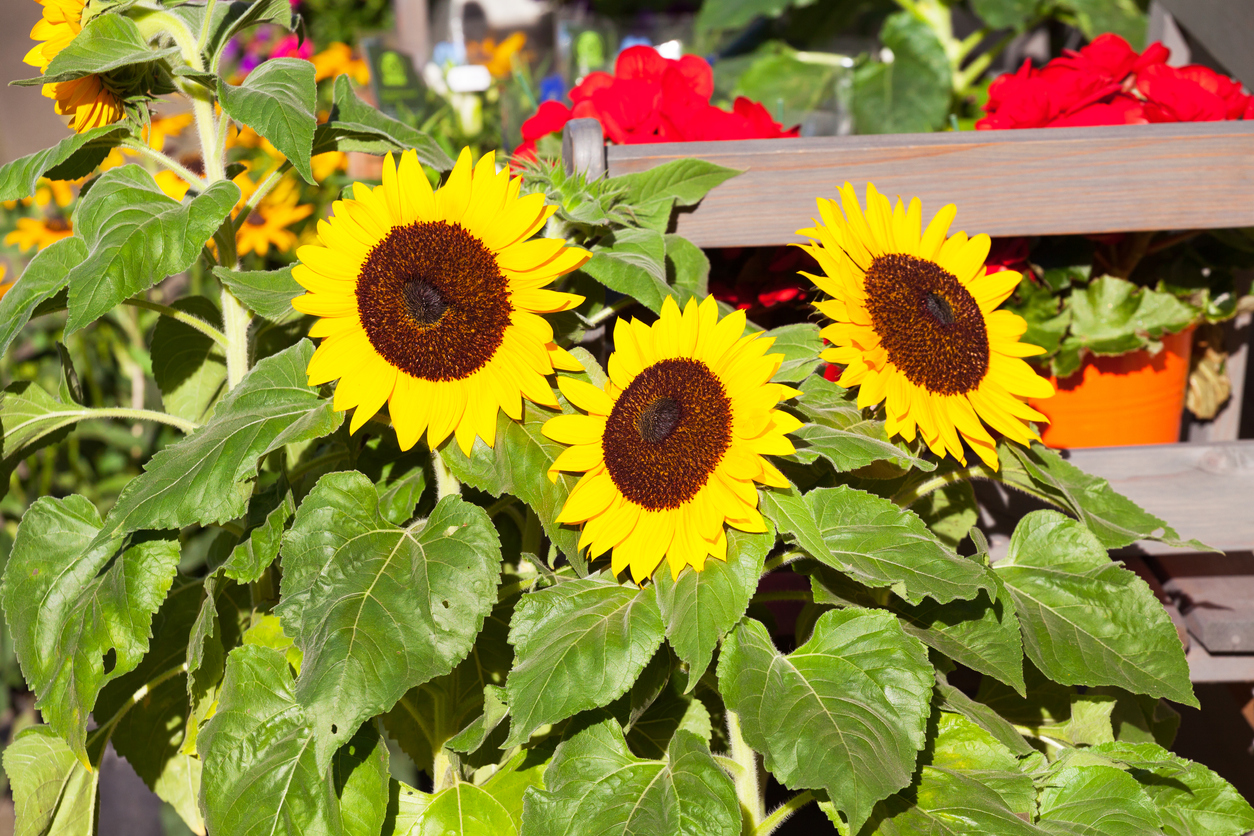
Sunflowers (Helianthus)
These beauties love full sun and provide food for birds as they prepare to migrate. Sunflowers also add a gorgeous splash of color to the backyard and turn to follow the sun as it crosses the sky. Some get incredibly tall, so make sure they have space to grow.
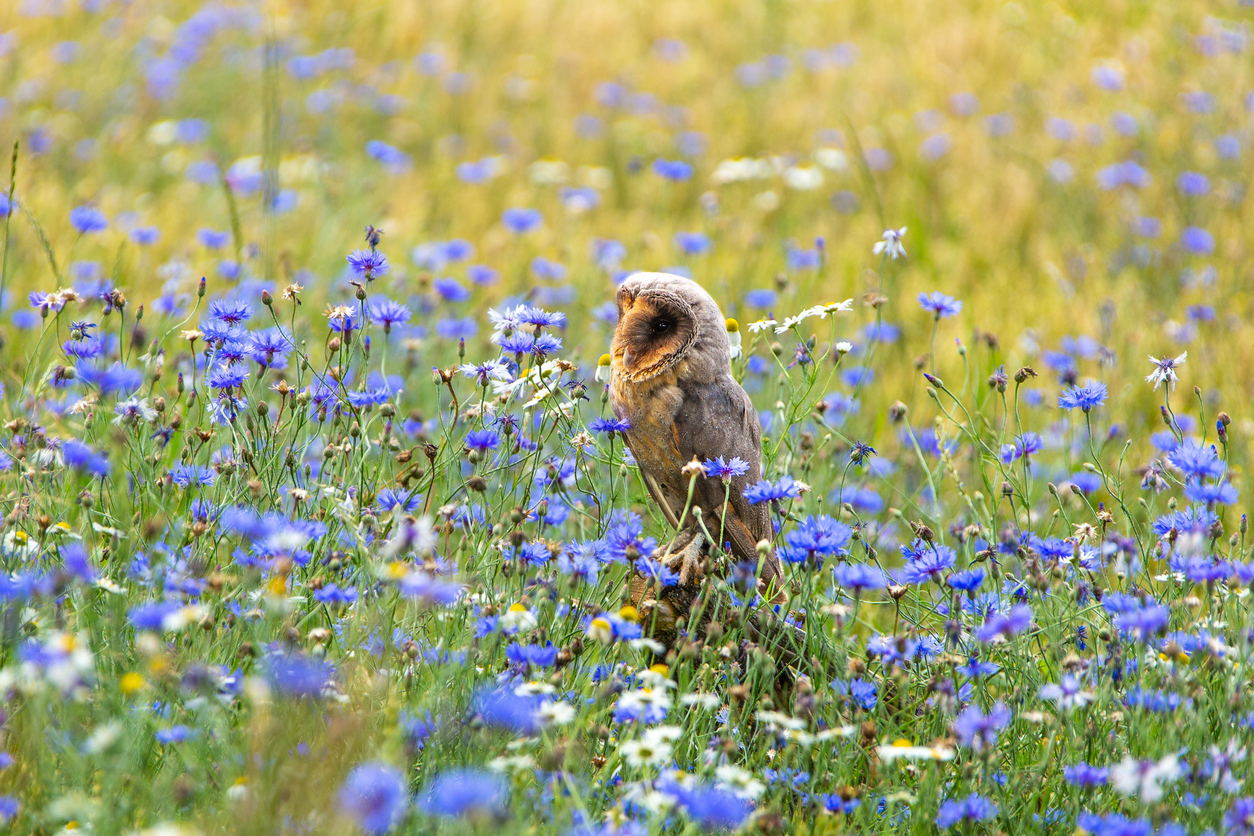
Cornflowers (Centaurea cyanus)
Sometimes called bachelor’s buttons, the bright purplish-blue cornflower’s shaggy petals add a striking pop of color to the garden. They blossom early in the year. Birds love the seeds and foliage, while bees and other insects use the nectar, pollen, and sap.
Related: Great Entrances: 10 Welcoming Garden Gates
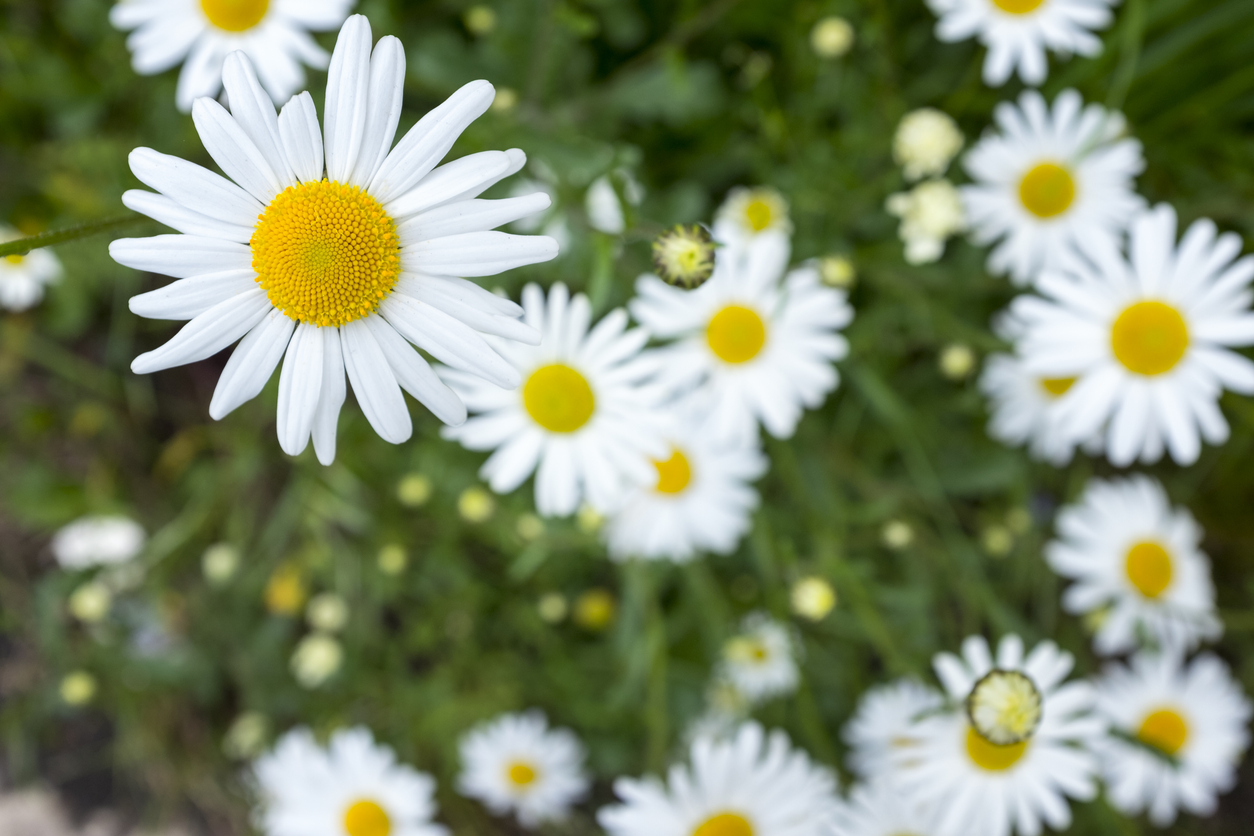
Daisies (species in the Asteraceae family)
Daisies somehow look friendly in a garden. They’re certainly friendly to birds with their nutritious seeds. A wide variety of daisies grace garden centers, from African varieties to the large Gerbera daisy. Stay traditional with a white flower, or use daisies to paint different colors across the backyard.
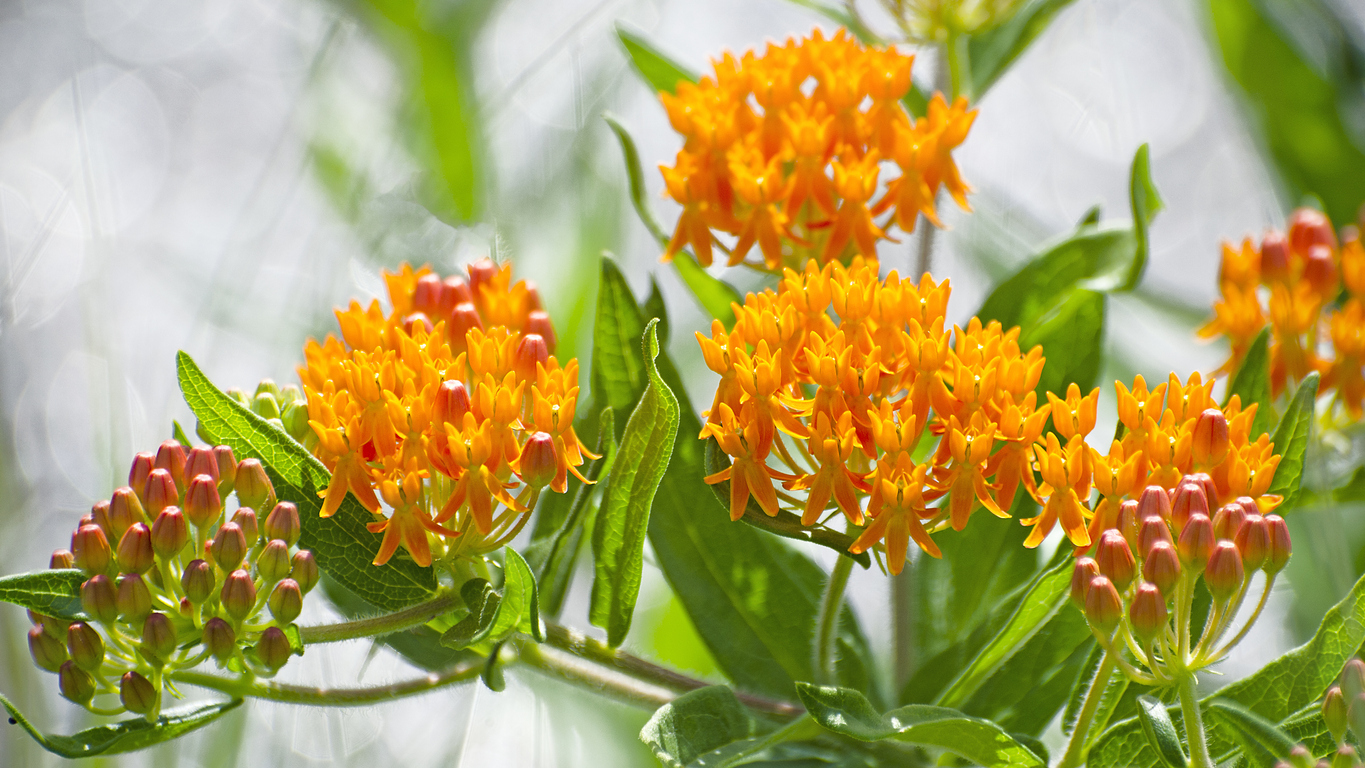
Milkweed (Asclepsias)
Milkweed hosts Monarch butterfly caterpillars. Insects love the plants, too, and insects provide valuable food for many birds. Certain species also use the fiber from these plants to build nests. Some milkweed varieties thrive in warm, dry climates, while others blossom where it’s wet.
RELATED: 3 Container Garden Combos for Attracting Pollinators

Buttonbush (Cephalanthus occidentalis)
These shrubs grow next to ponds, providing food for waterfowl. With attractive fruit and gorgeous flowers, they beautify the landscape, too. They thrive in a wide range of climates along the East Coast, West, and the Southwest.
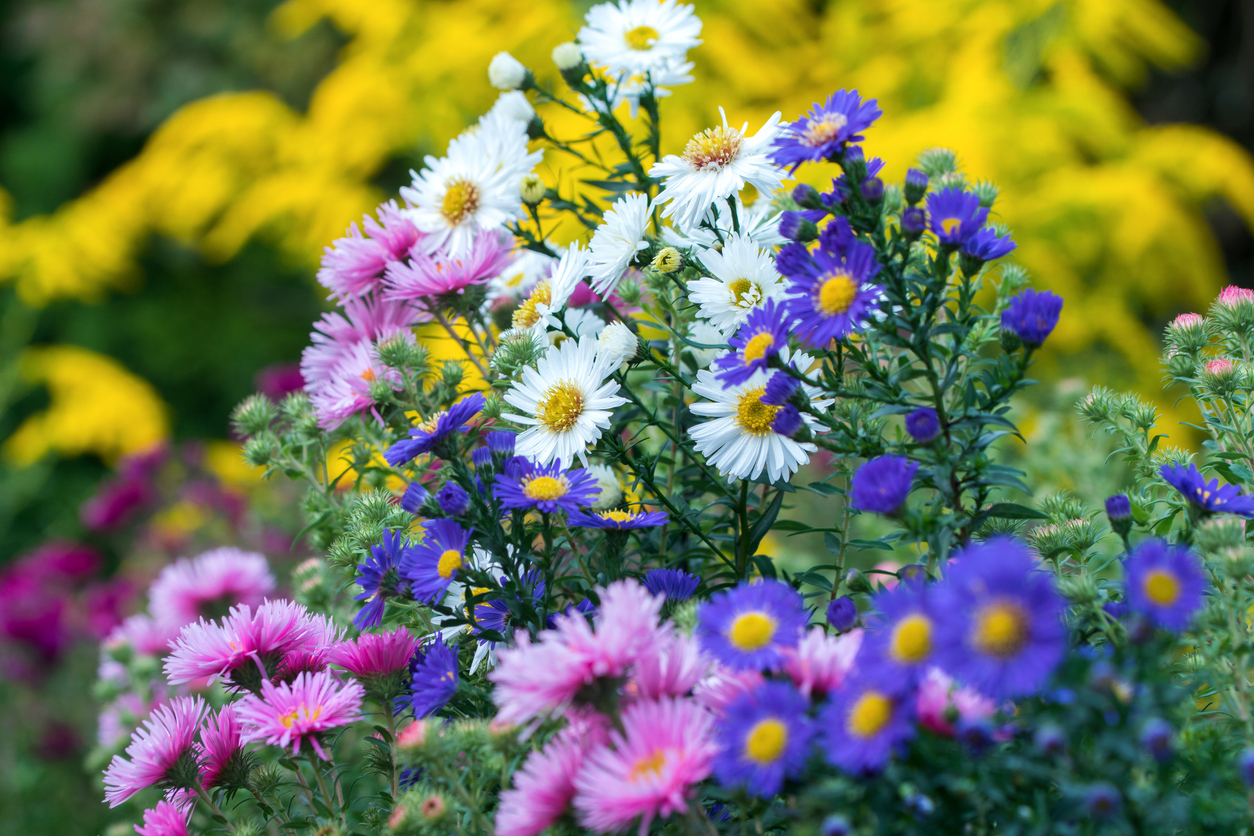
Aster (Asteraceae family)
Aster doesn’t bloom until the late summer and early fall, providing seeds for birds as the weather starts to turn. They’re a wonderful surprise when other garden flowers are starting to wilt. The flowers come in several colors—white, blue, pink, and purple.
Avoid removing spent flowers of asters and other bird-friendly plants toward the end of the growing season so songbirds can gather drying seeds.
Related: 19 “Zero Dollar” Garden Hacks
